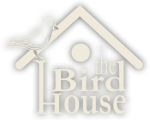June is the height of nesting season–but spring migrants can still be found early in the month. In some years, you can catch both ends of the shorebird migration: the last northbound birds at the start of the month, the first southbound birds at the end. On average, 169 species are reported.
This is a good month to visit areas that feature unique habitats for nesting species that otherwise wouldn’t be found here. In the woods, Letchworth State Park is a must stop at this time of year. Nesting species include Hooded Warbler, Louisiana Waterthrush, and Golden-crowned Kinglet. Acadian Flycatcher, Wild Turkey, and Ruffed Grouse are other specialties. Norway Road, just north of Route 104, is a great spot to observe nesting Blue-winged and Cerulean Warbler, Scarlet Tanager, Cuckoos, Veery and other species. Keep to the road, however–the woods and fields are private property. Swallow Hollow at Iroquois National Wildlife Refuge is also a great spot to find Cerulean Warbler, and the Onondaga Trail also has Acadian Flycatcher.
In the fields, the Nations Road area south of Avon has been consistently good for Grasshopper Sparrow and Orchard Oriole; Eastern Bluebird nest in the area, too.
On the lake, Franklin’s Gull are occasionally found in the first part of June. By the end of the month, Lesser Yellowlegs and Least and Semi-palmated Sandpiper are usually among the first to arrive. Since mudflats are usually in short supply this time of year for shorebirds, Ontario Beach and the piers at the mouth of the Genesee River are good places to watch. Iroquois National Wildlife Refuge, however, has some of the best habitat for early shorebirds. Roadsides around Canadice Lake are hopping with Cliff Swallow, and Hemlock Lake Park has Cliff Swallow, too.
On the ponds, nesting rails and bitterns prove especially elusive this time of year, and are best seen by getting into the marshes by canoe. Look at any of the ponds or borrow pits along the west lakeshore, Braddock Bay, marshes at the south end of Irondequoit Bay, and Montezuma and Iroquois National Wildlife Refuges (nesting Prothonotary Warbler is a specialty at Iroquois).
In the air, migrating Turkey Vulture continue to pass through; early June is also a good time to spot Bald Eagle, usually immatures, moving along the lakeshore. A great vantage point is the hawk watch platform at Braddock Bay–or any vantage point near the west lakeshore. You can also look for Bald Eagle flying over southern ends of places like Irondequoit Bay and Conesus Lake.



